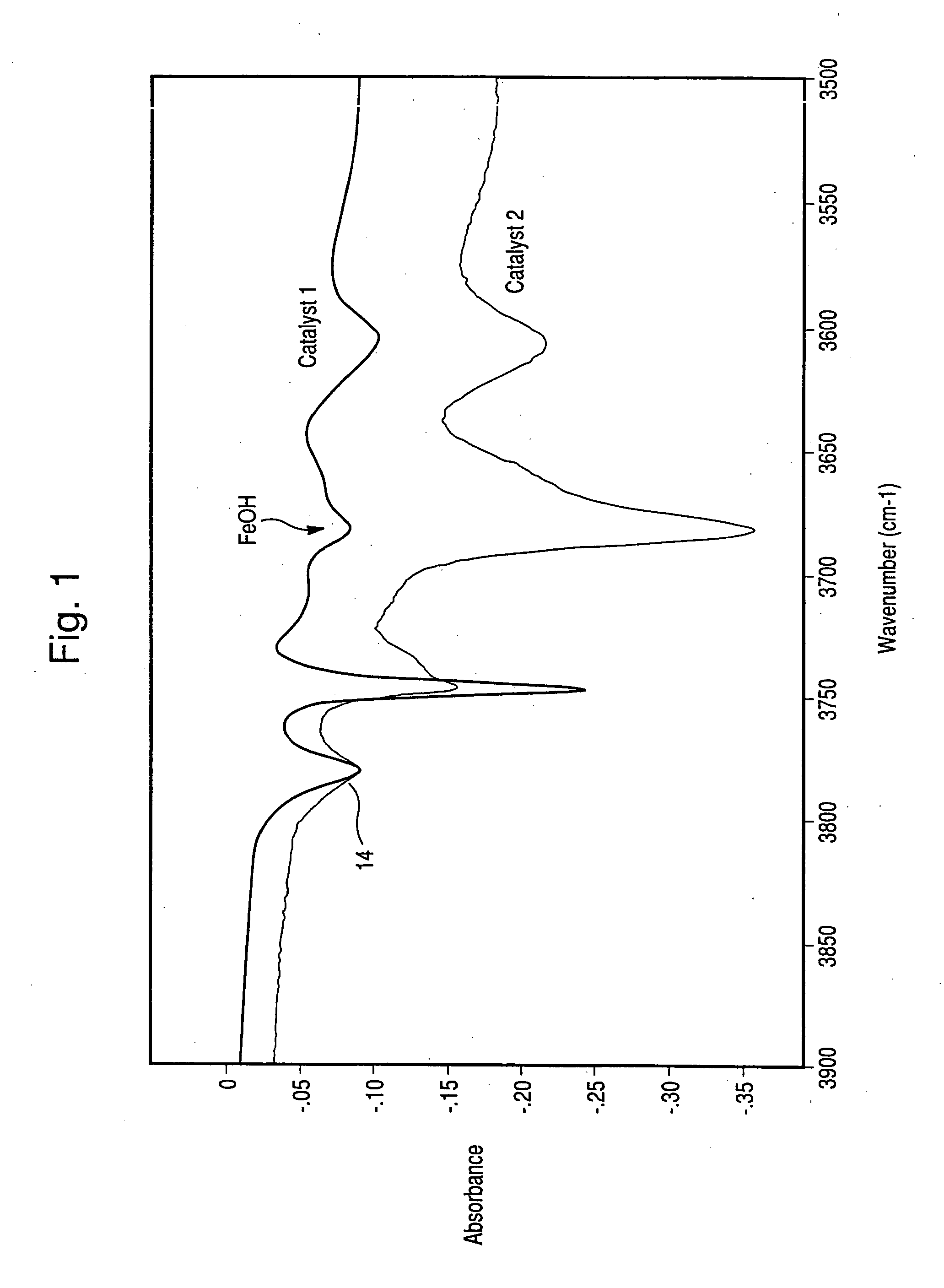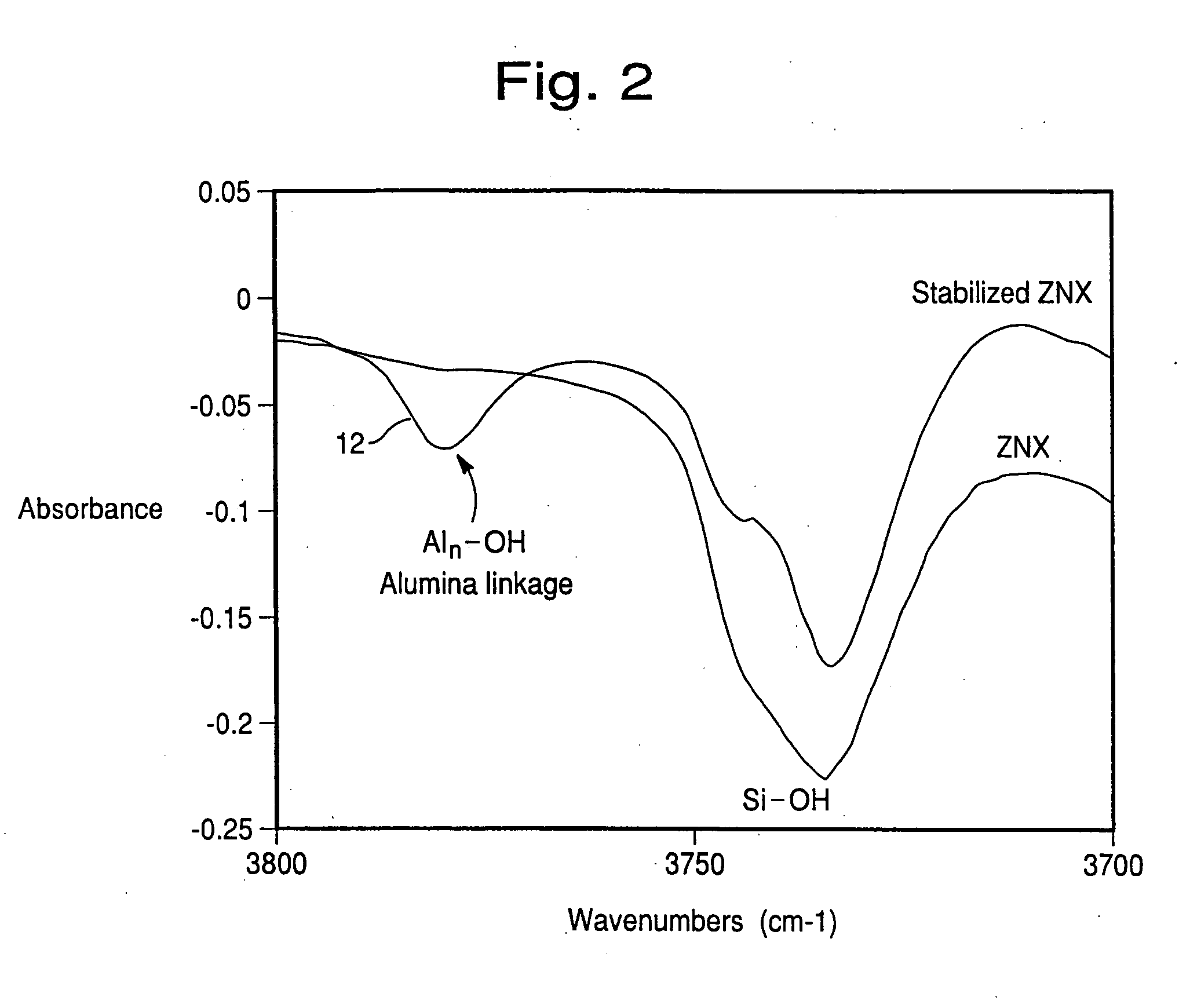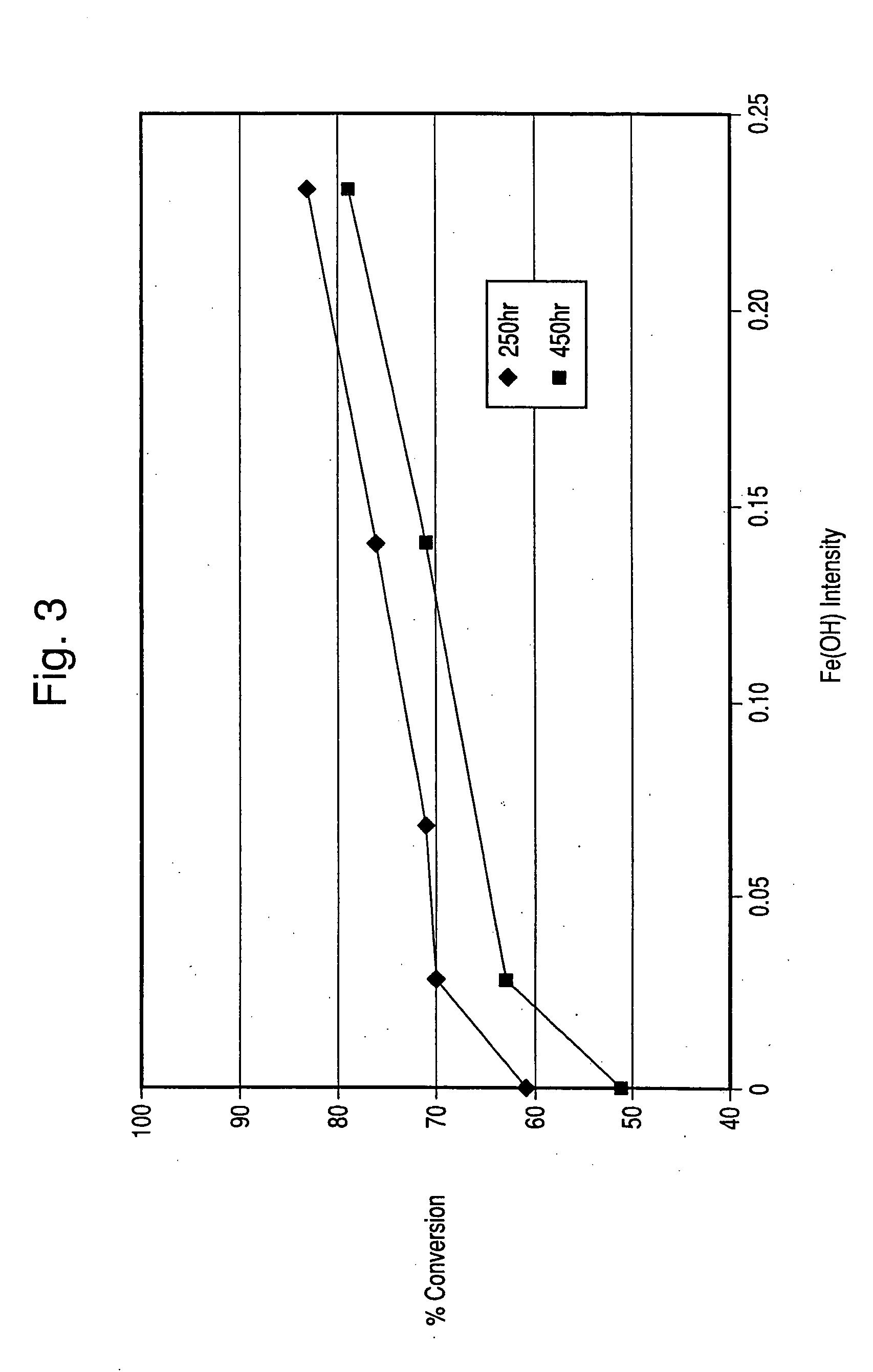Hydrothermally stable metal promoted zeolite beta for NOx reduction
a technology of nox reduction and hydrothermal stability, which is applied in the direction of metal/metal-oxide/metal-hydroxide catalysts, separation processes, etc., can solve the problems of iron-promoted zeolite beta's activity beginning to decline, and achieve the effects of improving hydrothermal stability, improving hydrothermal stability, and increasing fe(oh) conten
- Summary
- Abstract
- Description
- Claims
- Application Information
AI Technical Summary
Benefits of technology
Problems solved by technology
Method used
Image
Examples
example 1
[0043] Preparation of a standard iron-promoted beta zeolite (SAR 17.5:1), catalyst (ZNX) was as follows:
[0044] 1. To 1,000 g of deionized water (heated to 80° C. ) was added 25.5 g of FeSO4.H2O.
[0045] 2. To this solution was added 212.5 g of Na+ beta.
[0046] 3. The slurry in step 2was kept with continued stirring at 80° C. for one hour, then filtered through a filter press and washed with an additional 2,000 g of water.
example 2
[0047] Preparation of a low sodium beta zeolite (SAR 17.5:1) promoted with cerium / iron was as follows:
[0048] 1. 200 g of beta zeolite was dispersed in one liter of a one molar nitric acid solid, stirred for five hours, then filtered and washed with 2 liters of deionized water.
[0049] 2. The mixture was then dried and calcined at 650° C. for one hour to burn off carbon.
[0050] 3. The calcined beta was added to 2 liters of a 0.05 molar cerium nitrate solution at pH 4 and stirred for twenty-four hours filtered and washed with 4 liters of deionized water.
[0051] 4. The filter cake from step 3 was added to 2 liters of 0.05 molar FeCl2 solution, stirred for twenty-four hours, dried and washed with 4 liters of deionized water.
[0052] 5. The filter cake was then dried and calcined at 600° C. for six hours. The final product contained about 0.7% CeO2 and 1.4% Fe2O3.
example 3
[0053] Preparation of beta zeolite (SAR 10:1) promoted with cerium / iron:
[0054] 1. A cerium / iron promoted NH4+ beta zeolite (SAR of 10:1 was prepared following steps 3 to 5 in Example 2.
[0055] 2. The final product contained about 0.91% CeO2 and 2.05% Fe2O3.
PUM
| Property | Measurement | Unit |
|---|---|---|
| Temperature | aaaaa | aaaaa |
| Temperature | aaaaa | aaaaa |
| Temperature | aaaaa | aaaaa |
Abstract
Description
Claims
Application Information
 Login to View More
Login to View More - R&D
- Intellectual Property
- Life Sciences
- Materials
- Tech Scout
- Unparalleled Data Quality
- Higher Quality Content
- 60% Fewer Hallucinations
Browse by: Latest US Patents, China's latest patents, Technical Efficacy Thesaurus, Application Domain, Technology Topic, Popular Technical Reports.
© 2025 PatSnap. All rights reserved.Legal|Privacy policy|Modern Slavery Act Transparency Statement|Sitemap|About US| Contact US: help@patsnap.com



